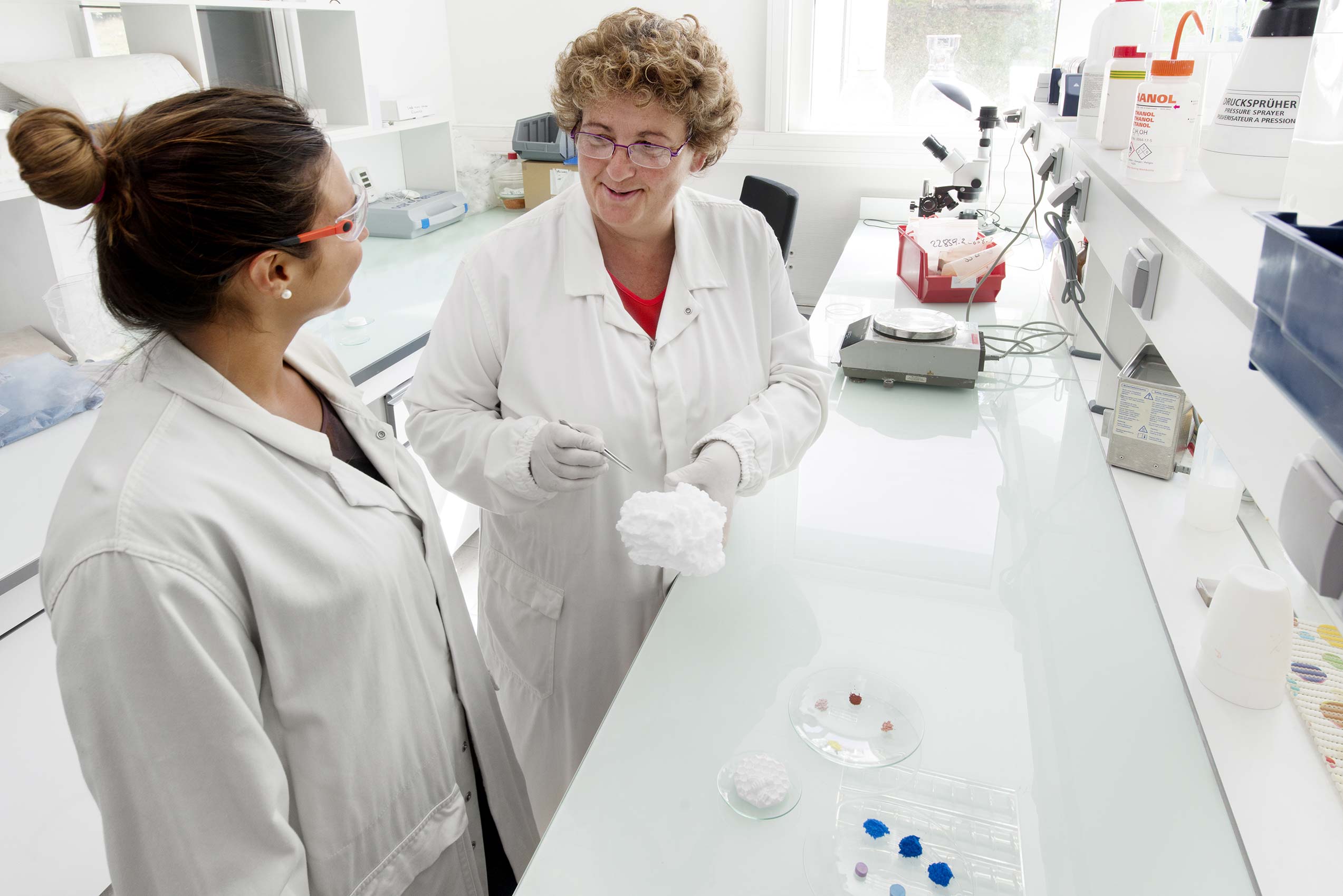 In the quest for advanced optical components and durable catalyst supports, researchers have long faced the challenge of fabricating transparent spinel ceramics with high resolution and minimal defects.
In the quest for advanced optical components and durable catalyst supports, researchers have long faced the challenge of fabricating transparent spinel ceramics with high resolution and minimal defects.
A study tackled this challenge by testing a stereolithography (SLA) 3D printing method, complemented by a tailored hot isostatic pressing (HIP) process. At the heart of this study is the Baikowski S30CR spinel, a high-purity material with an ultra-fine average particle size of approximately 50 nm and a specific surface area ranging from 25 to 28 m²/g that has enabled to produce complex-shaped transparent spinel ceramics.
Study Purpose: Overcoming Transparency and Resolution Challenges
The primary goal of researchers was to push the boundaries of 3D printed ceramics by achieving transparency and precision that rival conventional fabrication techniques, like die pressing and injection molding, while enabling intricately designed parts.
Furthermore, the study seeks to overcome the challenges posed by organic additives in many 3D printing processes, which often leave behind impurities and defects, thereby compromising the optical performance of the final product.
In summary, key challenges included:
- Achieving Near-Theoretical Transparency: Overcoming the inherent light scattering caused by residual pores and impurities.
- High Printing Resolution: Attaining fine details which are essential for creating intricate optical components.
- Uniform Densification: Ensuring a consistent and dense microstructure free of large pores that can hinder performance.
3D Printing: An innovative Process for Transparent Ceramic manufacturing
 The unique properties of magnesium aluminate spinel enable materials that not only transmit light with near-perfect clarity but also withstand extreme environments. Spinel ceramics are in fact ideal for applications ranging from high-energy laser windows to catalytic supports in water treatment.
The unique properties of magnesium aluminate spinel enable materials that not only transmit light with near-perfect clarity but also withstand extreme environments. Spinel ceramics are in fact ideal for applications ranging from high-energy laser windows to catalytic supports in water treatment.
The Baikowski S30CR spinel exceptional characteristics enabled the refinement of 3D printing and subsequent heat-treatment processes, paving the way for the creation of spinel ceramics that exhibit remarkable transparency and intricate geometries with fine feature sizes. Notably, achieving full densification necessitated a HIPing temperature of 1800 °C, underscoring the high sintering activity of our spinel powder.
Here’s how the process unfolded:
- Preparation of the Printable Paste:
The S30CR powder was meticulously dispersed in a photosensitive acrylate resin using an optimal concentration of dispersants. This created a ceramic paste with a uniform particle distribution and excellent self-holding ability, crucial for high-resolution SLA printing
(stereolithography). - SLA 3D Printing:
The prepared paste was used in a commercial SLA 3D printer. SLA additive manufacturing technique constructs objects layer by layer by directing a UV laser onto a vat of photosensitive resin, causing it to solidify into the desired shape. The method produced features as fine as 100–200 µm. Such precision is critical for applications in advanced optics where even minor deviations can lead to significant performance issues. - Multi-Step Debinding and HIP Sintering:
After printing, the green bodies underwent a carefully controlled multi-step debinding process to remove organic additives gradually. This was followed by a two-step sintering process: pre-sintering to boost the green body’s density, and HIP treatment to eliminate residual pores. This sequence was vital to obtaining a dense, almost pore-free microstructure.
Baikowski S30CR Outstanding Results
The printed spinel ceramics achieved a maximum transmittance of 84.8% at 1550 nm, reaching approximately 97% of the theoretical transmittance limit. Such transparency is a significant improvement over previously reported 3D printed ceramics and even exceeds many conventionally produced materials. These results are opening new avenues for advanced optical applications, including lenses, sensor windows, and artificial compound eyes used in robotics and surveillance.
The main results were:
Exceptional Optical Clarity:
The near-perfect optical performance is attributed to the uniform and dense microstructure enabled by the optimized processing techniques and the superior quality of the S30CR powder.
High Resolution and Design Flexibility:
The high resolution has been facilitated by the ultrafine particle size of Baikowski’s spinel powder, which is significantly smaller than the 355 nm wavelength of the UV light used in the SLA curing process. Consequently, UV light scattering is markedly reduced, leading to enhanced precision in the printed structures.
Robust Mechanical Properties:
The 3D printed ceramics boast a Vickers hardness of about 13.5 GPa, ensuring they can withstand harsh conditions where high temperature and chemical resistance are required.
Enhanced Thermal Stability:
Unlike common transparent polymers, these ceramics maintain their optical performance even when heated to temperatures between 800 and 1100 °C, making them suitable for applications in extreme environments.
 To showcase the potential applications of these 3D-printed spinel ceramics, researchers have fabricated various transparent optical components, including lens arrays, Fresnel lenses, hemispherical domes, and microlattices such as Kelvin cells and simple cubic structures. Notably, the optical imaging performance of some components, like convex lens arrays, was evaluated, demonstrating their capability to produce clear and sharp images without distortion.
To showcase the potential applications of these 3D-printed spinel ceramics, researchers have fabricated various transparent optical components, including lens arrays, Fresnel lenses, hemispherical domes, and microlattices such as Kelvin cells and simple cubic structures. Notably, the optical imaging performance of some components, like convex lens arrays, was evaluated, demonstrating their capability to produce clear and sharp images without distortion.
Furthermore, when utilized as supports for TiO₂ photocatalyst films, these transparent spinel ceramics significantly enhanced photocatalytic reactions compared to their opaque counterparts. This improvement is attributed to their larger illuminated surface area and controlled mass flow through intricately designed channels, highlighting their potential in environmental and energy applications.
 This study marks a significant leap forward in the field of 3D printed transparent ceramics. Through a meticulously designed process combining SLA 3D printing with optimized debinding, sintering, and HIPing, researchers have achieved unprecedented transparency and precision in spinel ceramics. The use of Baikowski S30CR has been pivotal, proving that when innovation meets quality, the result is a material that not only meets but exceeds the demanding standards of modern engineering applications.
This study marks a significant leap forward in the field of 3D printed transparent ceramics. Through a meticulously designed process combining SLA 3D printing with optimized debinding, sintering, and HIPing, researchers have achieved unprecedented transparency and precision in spinel ceramics. The use of Baikowski S30CR has been pivotal, proving that when innovation meets quality, the result is a material that not only meets but exceeds the demanding standards of modern engineering applications.
Read the full study titled 3D Printing of Transparent Spinel Ceramics with Transmittance Approaching the Theoretical Limit
For those seeking a reliable solution to the challenges of 3D printed ceramics, the story of S30CR is a testament to the power of advanced material science. Explore our comprehensive 3D printing solutions white paper to discover how Baikowski is leading the way in delivering next-generation materials for tomorrow’s technological challenges.



 High-purity sintered spinel materials have become increasingly valuable in a range of high-tech applications, thanks to their remarkable properties such as their durability, impact resistance, and optical clarity under extreme conditions, making them ideal for high-stakes environments
High-purity sintered spinel materials have become increasingly valuable in a range of high-tech applications, thanks to their remarkable properties such as their durability, impact resistance, and optical clarity under extreme conditions, making them ideal for high-stakes environments Baikowski® uses advanced analytical techniques to monitor and maintain these critical parameters, ensuring that every product meets the highest industry standards.
Baikowski® uses advanced analytical techniques to monitor and maintain these critical parameters, ensuring that every product meets the highest industry standards.
 One of the most exciting recent developments in spinel technology is the advent of ultra-wide-band-gap spinels, such as zinc gallate (ZnGa₂O₄). These materials are paving the way for next-generation semiconductors, offering superior energy efficiency and thermal stability.
One of the most exciting recent developments in spinel technology is the advent of ultra-wide-band-gap spinels, such as zinc gallate (ZnGa₂O₄). These materials are paving the way for next-generation semiconductors, offering superior energy efficiency and thermal stability.
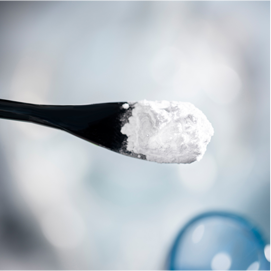 Oxide Ceramic matrix composites (Ox-CMCs) combine excellent strength, chemical resistance, and thermal stability. These qualities make them suitable for components exposed to harsh and oxidative environments, such as gas turbine engines and thermal protection systems.
Oxide Ceramic matrix composites (Ox-CMCs) combine excellent strength, chemical resistance, and thermal stability. These qualities make them suitable for components exposed to harsh and oxidative environments, such as gas turbine engines and thermal protection systems. Composites reinforced with Nextel 610 fibers and alumina matrices were produced in two variations: one using non-doped alumina and the other doped with 480 ppm MgO.
Composites reinforced with Nextel 610 fibers and alumina matrices were produced in two variations: one using non-doped alumina and the other doped with 480 ppm MgO.
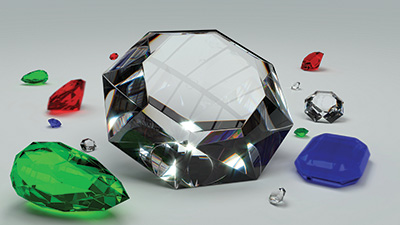
 With over 120 years of expertise, Baikowski® is a leading provider of advanced materials. We began by offering synthetic sapphire and then later expanded to powder solutions, including polishing solutions for the watchmaking, optics, electronics and semiconductor industries.
With over 120 years of expertise, Baikowski® is a leading provider of advanced materials. We began by offering synthetic sapphire and then later expanded to powder solutions, including polishing solutions for the watchmaking, optics, electronics and semiconductor industries. The crystal orientation of sapphire is significantly related to polishing difficulty. The C-axis (0001 plane) is the hardest orientation to polish, presenting up to 20% more resistance, and requiring specially formulated slurries to achieve a fine, imperfection-free finish.
The crystal orientation of sapphire is significantly related to polishing difficulty. The C-axis (0001 plane) is the hardest orientation to polish, presenting up to 20% more resistance, and requiring specially formulated slurries to achieve a fine, imperfection-free finish. Performance of sph-51 Silica solution (A plane)
Performance of sph-51 Silica solution (A plane) Comparison of SPH-51 & SPH-53 Silica solutions (C PLANE 4’’)
Comparison of SPH-51 & SPH-53 Silica solutions (C PLANE 4’’) ALUMINA-BASED SLURRIES COMPARISON
ALUMINA-BASED SLURRIES COMPARISON
 This article summarizes the study “Transparent Alumina Ceramics Fabricated by 3D Printing and Vacuum Sintering”, which explored the potential of additive manufacturing to revolutionize ceramic fabrication.
This article summarizes the study “Transparent Alumina Ceramics Fabricated by 3D Printing and Vacuum Sintering”, which explored the potential of additive manufacturing to revolutionize ceramic fabrication.


 CMCs are increasingly utilized in
CMCs are increasingly utilized in 







 Baikowski®’s ZTA products, which combine tailored alumina and zirconia, exhibits high chemical purity, homogeneous particle distribution, and fine microstructures, to meet the stringent demands of medical applications such as prostheses or implants.
Baikowski®’s ZTA products, which combine tailored alumina and zirconia, exhibits high chemical purity, homogeneous particle distribution, and fine microstructures, to meet the stringent demands of medical applications such as prostheses or implants.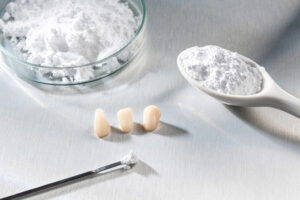 In dental applications, zilight®, with its nano-zirconia particles as small as 5nm, is an ideal choice for dental prosthetics, ensuring durability, aesthetic appeal, and long-term health benefits. Nano-zirconia is biocompatible, brings also radiopacity and thanks to its small size can yield to translucent materials.
In dental applications, zilight®, with its nano-zirconia particles as small as 5nm, is an ideal choice for dental prosthetics, ensuring durability, aesthetic appeal, and long-term health benefits. Nano-zirconia is biocompatible, brings also radiopacity and thanks to its small size can yield to translucent materials. High-purity alumina offers exceptional hardness and abrasive qualities necessary for achieving smooth and precise finishes on surgical tools and implants. A polished surface reduces the risk of tissue irritation and promotes better integration with body tissues.
High-purity alumina offers exceptional hardness and abrasive qualities necessary for achieving smooth and precise finishes on surgical tools and implants. A polished surface reduces the risk of tissue irritation and promotes better integration with body tissues. High-purity alumina is essential for polishing optical components used in diagnostic tools such as endoscopes and microscopes for instance, as well as for lenses, mirrors and prisms.
High-purity alumina is essential for polishing optical components used in diagnostic tools such as endoscopes and microscopes for instance, as well as for lenses, mirrors and prisms. To find the ideal abrasive solutions for your substrates, delve into our product selection guide within our Polishing Solutions White Paper and do not hesitate to contact our experts for guidance.
To find the ideal abrasive solutions for your substrates, delve into our product selection guide within our Polishing Solutions White Paper and do not hesitate to contact our experts for guidance.
 In automotive manufacturing, advanced polishing materials that deliver both precision and an impeccable finish are essential. At Baikowski®, we specialize in producing custom fine alumina powders that not only meet the highest standards but also provide a competitive edge by reducing polishing time and achieving a superior high-gloss finish. This is crucial in the intermediate and superfinish polishing stages, where balancing cutting efficiency with an outstanding gloss and transparency is key.
In automotive manufacturing, advanced polishing materials that deliver both precision and an impeccable finish are essential. At Baikowski®, we specialize in producing custom fine alumina powders that not only meet the highest standards but also provide a competitive edge by reducing polishing time and achieving a superior high-gloss finish. This is crucial in the intermediate and superfinish polishing stages, where balancing cutting efficiency with an outstanding gloss and transparency is key.


 As the global demand for effective water treatment systems grows, particularly in regions where access to clean drinking water is scarce, the development of
As the global demand for effective water treatment systems grows, particularly in regions where access to clean drinking water is scarce, the development of In conclusion, spinel-based composite membranes offer a solution for filtering viruses and other microorganisms from drinking water, with the added benefit of being durable and regenerable. The Baikowski®’s high-purity spinel powder, S25CR, play a role in these advanced filtration technologies, ensuring both high filtration efficiency and long-term stability.
In conclusion, spinel-based composite membranes offer a solution for filtering viruses and other microorganisms from drinking water, with the added benefit of being durable and regenerable. The Baikowski®’s high-purity spinel powder, S25CR, play a role in these advanced filtration technologies, ensuring both high filtration efficiency and long-term stability.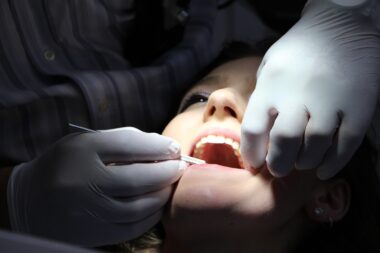
 ts are looking for
ts are looking for  The control of Mathym’s zirconia grain size to less than 100 nm enables to produce high translucency ceramics without compromising solidity. Moreover, the adjustment of yttria doping in the 8 mol.% range also allows enhanced optical transparency. The obtained ceramics exhibit opalescence similar to natural enamel, creating a bluish and orange appearance under different lighting conditions.
The control of Mathym’s zirconia grain size to less than 100 nm enables to produce high translucency ceramics without compromising solidity. Moreover, the adjustment of yttria doping in the 8 mol.% range also allows enhanced optical transparency. The obtained ceramics exhibit opalescence similar to natural enamel, creating a bluish and orange appearance under different lighting conditions. Mathym’s commitment to innovation extends beyond zilight® nano-zirconia suspension.
Mathym’s commitment to innovation extends beyond zilight® nano-zirconia suspension.



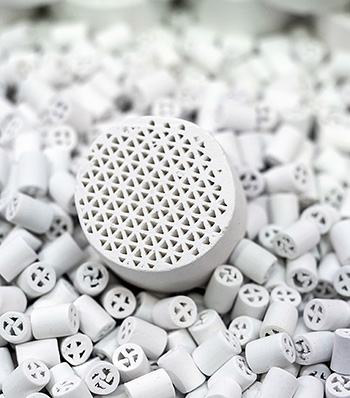
 Baikowski is at the forefront of innovation in materials science. Our products enable research and technological advancements in the field of
Baikowski is at the forefront of innovation in materials science. Our products enable research and technological advancements in the field of These membranes exhibits enhanced stability and permeance, as well as tailored surface properties that can be employed in various industries to address critical separation and filtration challenges such as :
These membranes exhibits enhanced stability and permeance, as well as tailored surface properties that can be employed in various industries to address critical separation and filtration challenges such as :
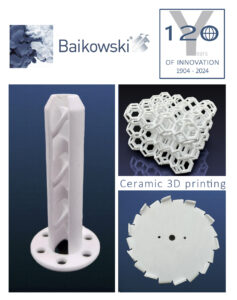 Aerospace and Defense: The high strength and thermal stability of ceramic parts produced with our powders can withstand harsh conditions and maintain structural integrity in high-stress environments, including critical structural applications.
Aerospace and Defense: The high strength and thermal stability of ceramic parts produced with our powders can withstand harsh conditions and maintain structural integrity in high-stress environments, including critical structural applications.


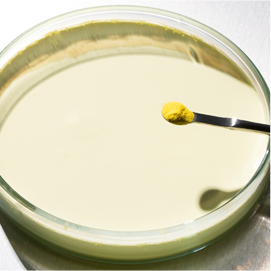

 As the aviation industry continues to shape the future and work towards decarbonization,
As the aviation industry continues to shape the future and work towards decarbonization,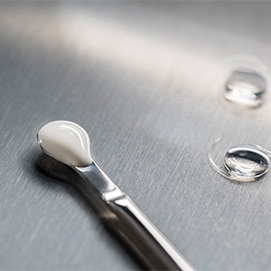 Developing high quality Ox/Ox CMCs with superior performance properties for critical components required precise control over the characteristics of high purity alumina-based powders and slurries such as :
Developing high quality Ox/Ox CMCs with superior performance properties for critical components required precise control over the characteristics of high purity alumina-based powders and slurries such as :
 Mechanical strength
Mechanical strength



 As noticeable examples:
As noticeable examples: